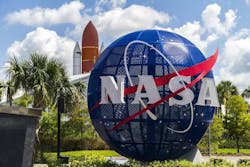NASA announces NIAC program funding awardees
WASHINGTON - The National Aeronautics and Space Administration (NASA) announced it has chosen 15 ideas for its 2025 Phase I awards under the NASA Innovative Advanced Concepts (NIAC) program, which aims to develop transformative technologies for future aerospace missions. The selected projects, representing institutions and companies across the United States, include diverse concepts such as lunar habitats, fusion propulsion, and advanced robotic systems.
The NIAC program supports early-stage technology studies that could pave the way for future space exploration and potential commercialization. NASA has allocated up to $2.625 million in grants to assess the feasibility of these technologies.
"Our next steps and giant leaps rely on innovation, and the concepts born from NIAC can radically change how we explore deep space, work in low Earth orbit, and protect our home planet," said Clayton Turner, associate administrator for NASA’s Space Technology Mission Directorate. "From developing small robots that could swim through the oceans of other worlds to growing space habitats from fungi, this program continues to change the possible."
Related: NASA seeks industry info as it aims to develop aerocapture tech
Among the selected projects are technologies for exploring the Sun's influence on the solar system, creating sustainable lunar habitats from glass, and investigating Saturn’s icy moon Enceladus. These studies are in the early conceptual stages and are not yet formal NASA missions.
Ryan Weed of Helicity Space LLC in Pasadena, Calif., proposed using the Helicity Drive, a compact fusion propulsion system, to power a constellation of spacecraft for multi-directional exploration of the heliosphere. This technology could enable deep space exploration, including future crewed missions to Mars.
Martin Bermudez of Skyeports LLC in Sacramento, Calif., introduced the concept of LUNGS (Lunar Glass Structure), which involves melting lunar glass compounds to construct a large spherical habitat on the Moon. The approach aims to support large-scale, self-sustaining lunar habitats.
Justin Yim from the University of Illinois in Urbana, Ill., proposed LEAP (Legged Exploration Across the Plume), a jumping robot designed to sample material from the geysers of Saturn’s moon Enceladus. The robots could collect pristine ocean-derived particles and gather data across multiple geysers.
"All advancements begin as an idea. The NIAC program allows NASA to invest in unique ideas enabling innovation and supporting the nation’s aerospace economy," said John Nelson, NIAC program executive.
Other Selected Projects:
• Michael Hecht, Massachusetts Institute of Technology, Cambridge, Mass.: Exploring Venus with Electrolysis (EVE)
• Selim Shahriar, Northwestern University, Evanston, Ill.: SUPREME-QG for quantum gravity measurements
• Phillip Ansell, University of Illinois, Urbana, Ill.: Hydrogen Hybrid Power for Aviation Sustainable Systems (Hy2PASS)
• Ryan Benson, ThinkOrbital Inc., Boulder, Colo.: Construction Assembly Destination
• Gyula Greschik, Tentguild Engineering Co., Boulder, Colo.: The Ribbon: Structure-Free Sail for Solar Polar Observation
• Marco Quadrelli, NASA Jet Propulsion Laboratory, Pasadena, Calif.: Planetary Pulse-Taker (PULSAR)
• Ben Hockman, NASA Jet Propulsion Laboratory, Pasadena, Calif.: Tethered Observatory for Atmospheric Sampling (TOBIAS)
• Kimberly Weaver, NASA Goddard Space Flight Center, Greenbelt, Md.: Accretion Explorer Interferometer for black hole studies
• John Mather, NASA Goddard Space Flight Center, Greenbelt, Md.: Inflatable Starshade for Exoplanet Observation
• Robert Hinshaw, NASA Ames Research Center, Mountain View, Calif.: MitoMars for mitochondria replacement therapy in deep space missions
• Christine Gregg, NASA Ames Research Center, Mountain View, Calif.: Architected Metamaterials for Space Structures
• Saurabh Vilekar, Precision Combustion, North Haven, Conn.: Catalytic Oxygen Supply for Mars
